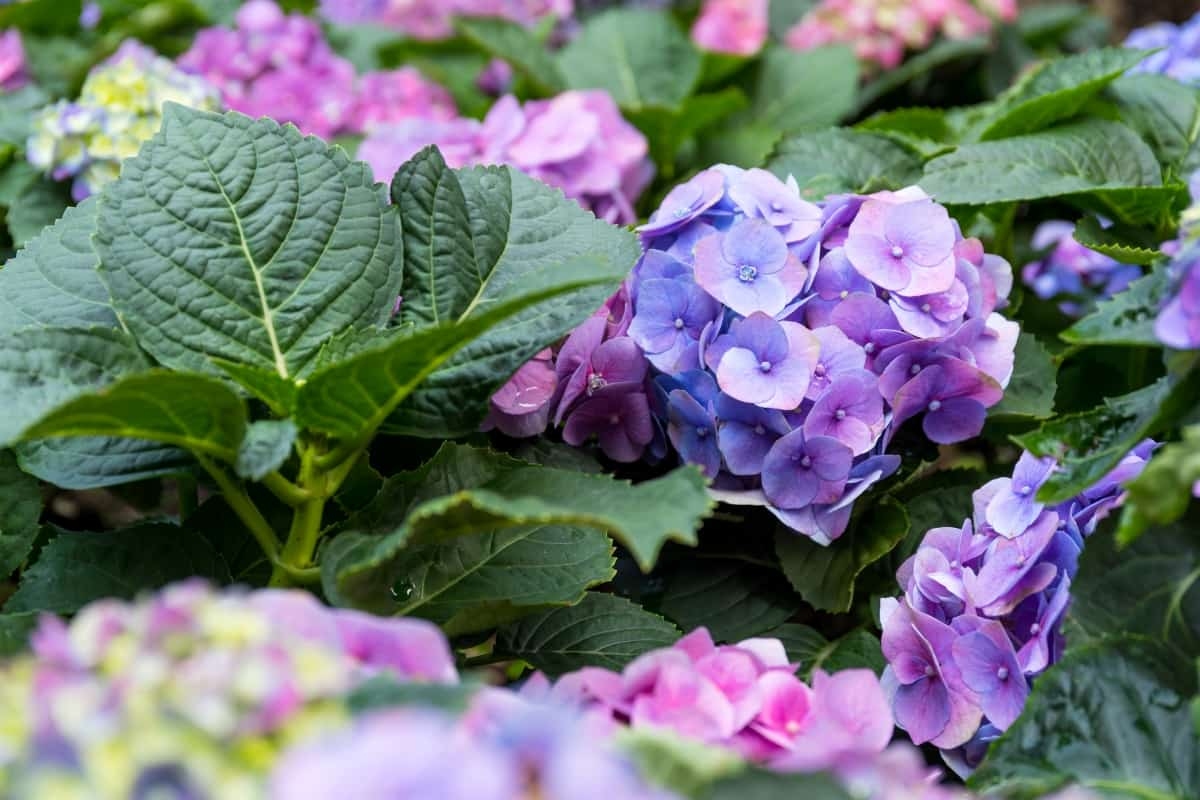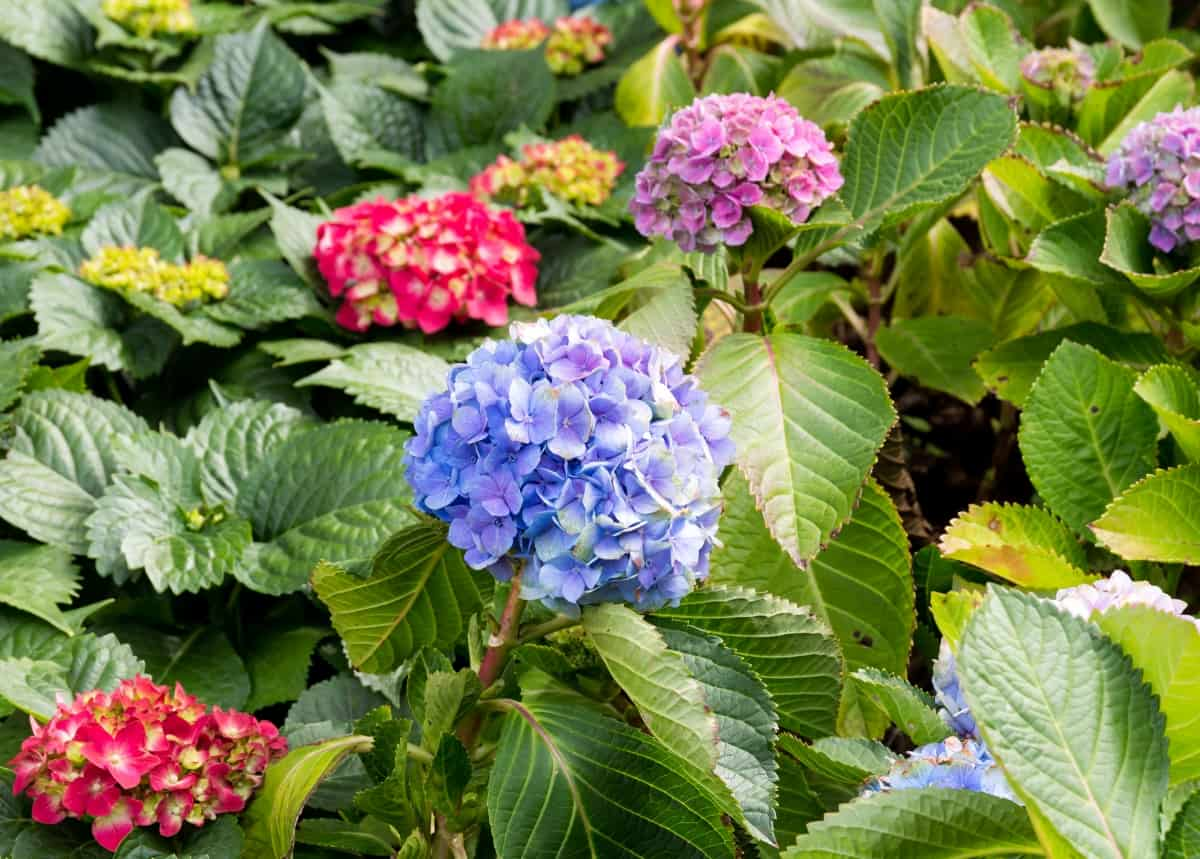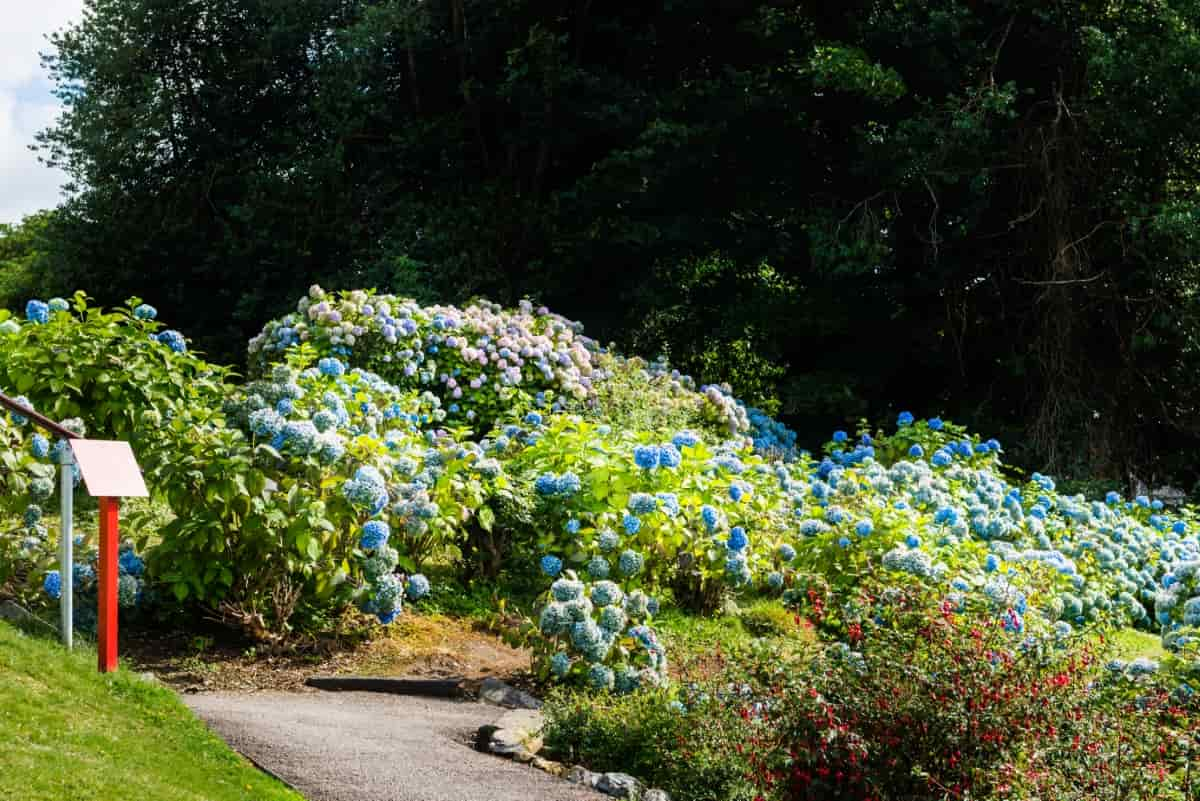Hydrangeas, with their beautiful flower heads and stunning hues, are a prized feature of many gardens. These flowering plants are known for their hardiness, yet even the most resilient flora are susceptible to pests and diseases. This article explores the common pests and diseases that afflict hydrangeas, including aphids, powdery mildew, leaf spot disease, bacterial wilt, snails, slugs, and more. We will guide you through identifying, treating, and preventing these issues to ensure your hydrangeas thrive.

Common Hydrangea Pests and Diseases
Hydrangea Aphid Infestation: Identification and Treatment
One of the most common pests that hydrangeas encounter is the aphid. These tiny, sap-sucking insects appear as green or black clusters on the undersides of leaves or flower buds. Aphids release a viscous substance known as honeydew, which promotes the development of black sooty mold, causing additional harm to plants.
To treat an aphid infestation, begin by pruning heavily infested plant parts. In mild cases, a strong spray of water can dislodge these pests. For more serious infestations, apply insecticidal soap or neem oil to all plant surfaces according to the product’s instructions. Consider introducing beneficial insects, like ladybugs and lacewings, natural predators of aphids, to prevent future outbreaks.
Preventing Powdery Mildew on Hydrangeas: Effective Management Tips
Powdery mildew, a fungal disease, is a white, powdery substance on the leaf surface. It thrives in humid conditions and can stunt growth and cause leaf drop. Prevention is crucial for this disease. Maintain good air circulation around your plants by spacing them properly and pruning them regularly.
Remove and dispose of fallen or diseased leaves to prevent spores from spreading. Water plants at their base, not overhead, as wet leaves can encourage fungal growth. If you notice signs of powdery mildew, treat your hydrangeas with a fungicide specifically designed for powdery mildew, following label instructions carefully.
Identifying and Managing Hydrangea Leaf Spot Disease
Hydrangea leaf spot disease manifests as brown or purple spots on the leaves, often with a halo of gray mold around the spots when conditions are damp. To manage this disease, prune and destroy infected leaves, increase air circulation, and avoid wetting foliage when watering. Regularly sanitize your pruning tools to avoid spreading the disease. Fungicides may be used in severe cases, but always adhere to product guidelines.
Treatment Options for Hydrangea Bacterial Wilt
Bacterial wilt is a serious condition that can cause wilting and yellowing of leaves, branch dieback, and, eventually, plant death. Caused by the bacterium Ralstonia solanacearum, it enters plants through the roots, disrupting their ability to transport water and nutrients. Bacterial wilt is challenging to control once established; hence, prevention is key. Purchase disease-free plants, avoid overwatering, and ensure good drainage. Remove and dispose of affected plants promptly to prevent the spread of the disease.
Common Pests Affecting Hydrangeas: Prevention and Control
Other pests commonly affecting hydrangeas include beetles, spider mites, and caterpillars. Perform routine inspections of your plants to detect any indications of pest presence, and take immediate action to address infestations. For larger pests such as beetles and caterpillars, manually remove them by hand or dislodge them from the plant using a forceful water spray.
In case you missed it: The Best Fertilizer for Hydrangea: When and How to Apply

When dealing with spider mites, employ miticides or insecticidal soaps specifically designed for their control. As a preventive measure, establish and maintain a healthy, diverse garden environment that will naturally attract beneficial insects capable of managing these pests. By cultivating plants like marigolds, dill, and fennel, you can attract ladybugs and lacewings, which serve as predators to harmful pests.
Managing Rust Disease in Hydrangea Plants: Step-By-Step Guide
Rust disease, caused by the Pucciniastrum hydrangea fungus, appears as small orange or brown pustules on the undersides of leaves. The disease cycle starts in the spring and can cause serious defoliation if left untreated. To manage rust, remove and destroy infected leaves promptly to reduce spore dispersal. Proper spacing and regular pruning improve air circulation and reduce humidity around plants. Use fungicides labeled for rust control as a preventive or early treatment measure.
Controlling Snails and Slugs on Hydrangeas: Best Practices
Snails and slugs can cause significant damage to hydrangeas, leaving irregular, ragged holes in the leaves. Control these pests by eliminating their hiding places, such as piles of leaves or other garden debris. Snail and slug traps, baits, and barriers can also be effective. Traps filled with beer attract these pests, which fall in and drown. Copper barriers create a surface that snails and slugs are unwilling to cross, providing a protective perimeter for your plants.
How to Identify and Treat Hydrangea Root Rot
Root rot is a serious condition caused by a fungus-like Phytophthora. Symptoms include wilting, yellowing leaves, stunted growth, and plant death. This condition is exacerbated by poor drainage and overwatering, causing the roots to become waterlogged and susceptible to the fungus. First, remove the affected plant and examine the roots to treat root rot.
Optimal roots display solidity and a white coloration, whereas deteriorated roots typically exhibit a brownish hue and a soft, spongy texture. Severely affected plants may not recover and should be destroyed. For less affected plants, prune away rotted roots and replant in well-draining soil. Prevent root rot by avoiding overwatering and ensuring your plants have good drainage.
Preventing and Managing Hydrangea Bud Blight
Hydrangea bud blight, caused by the Botrytis fungus, affects the flower buds, covering them in a gray, fuzzy mold and causing them to rot. To manage bud blight, ensure good air circulation around plants by proper spacing and pruning. Remove and destroy any affected buds. As a preventive measure, water hydrangeas at their base to keep the buds dry, reducing the conditions that encourage fungal growth.
Dealing With Hydrangea Scale Insects: Identification and Treatment Strategies
Scale insects are small, immobile insects that attach themselves to the stems and leaves of hydrangeas, sucking the sap and weakening the plant. They are shielded by a hard, scale-like covering, making them difficult to control.
In case you missed it: How to Grow Hydrangeas from Stem Cuttings

Signs of infestation include yellowing leaves, stunted growth, and a sticky honeydew that can lead to sooty mold. For treatment, prune and destroy heavily infested stems. Insecticidal soap or horticultural oil can control scale insects, but they must come into contact with the insect to be effective. Ladybugs and other beneficial insects can aid in managing scale populations.
Conclusion
With proper identification, treatment, and preventive strategies, you can protect your hydrangeas and ensure their continued growth and blossoming. Remember, a healthy, well-cared-for plant is the best defense against pests and diseases.
- Feed Your Flock for Less: Top 10 Tips to Save on Chicken Feed
- Ultimate Guide to Ossabaw Island Hog: Breeding, Raising, Diet, and Care
- Hatching Answers: The Top 10 Reasons Your Chickens Aren’t Laying Eggs
- Eggs and Economics: Breaking Down the Cost of Raising Backyard Chickens
- Defend Your Greens: Proven Methods to Keep Iguanas Out of Your Garden
- Ultimate Guide to Cinnamon Queen Chicken: A Comprehensive Guide for Beginners
- Ultimate Guide to California Tan Chicken: Breeding, Raising, Diet, Egg-Production and Care
- Ultimate Guide to Marsh Daisy Chicken: Breeding, Raising, Diet, and Care
- 10 Types of Chicken Farming Businesses You Can Start for Profits